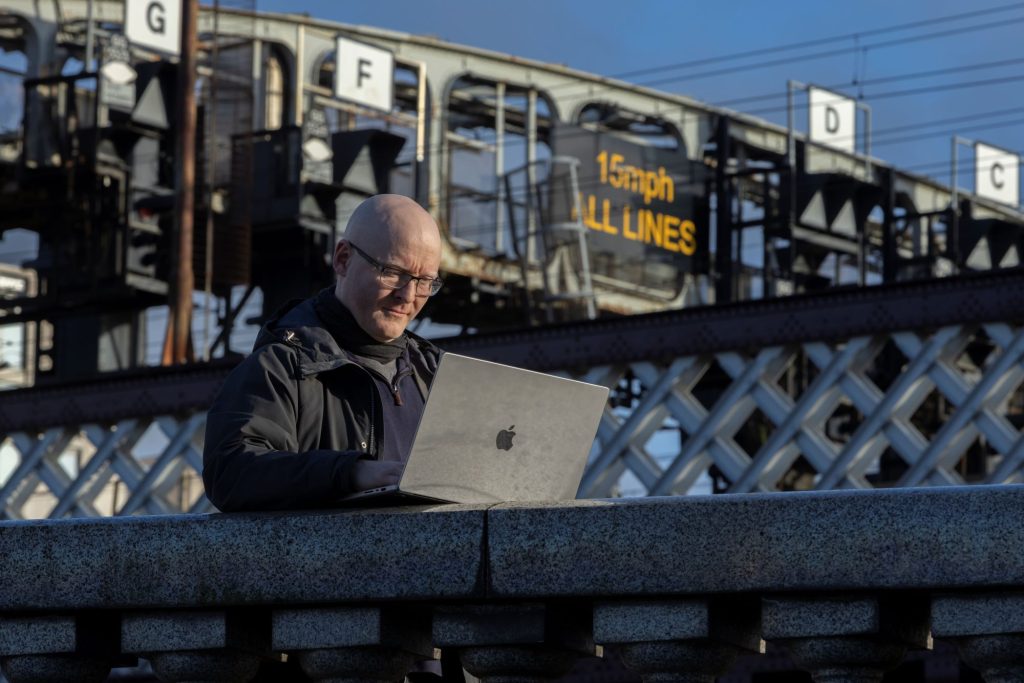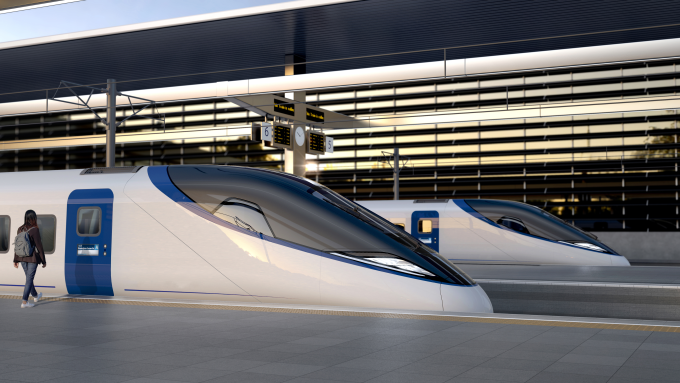
Meet the innovator helping construction projects use data better

“Technology brings transparency, and the more that infrastructure and construction companies embrace tech and share their data, the greater the improvements they will see,” says Paul Duddy of software specialist Hypervine.
Paul and his start-up firm took part in the HS2 Accelerator delivered by Connected Places Catapult in 2021 to develop new ways of reducing paper-based processes, and to automate labour-intensive ways of working. It created a smartphone app to better manage large volumes of data within documents on building and engineering projects.
Around the same time, Paul’s company also developed tools to analyse satellite images to monitor the movement of construction plant in order to identify areas where efficiencies could be improved, and measure emissions generated on site.
Now he is taking forward the two technologies in the water sector, bringing them together to build a risk map identifying the location of leaks in ageing infrastructure, and to predict where pipes are most likely to burst – based on past problems – to allow for targeted preventative maintenance.
Hypervine also hopes to make a breakthrough into the railway engineering market to use its satellite systems to spot sites where landslides are most likely to take place.
“Thanks to the HS2 Accelerator we were introduced not only to the rail client but contractors and several other software companies working in the construction industry,” says Paul. “We learnt a lot and the support we received from Connected Places Catapult around marketing, business development and communicating our vision was really useful.”Paul Duddy, Hypervine
During the programme, Paul pitched several ideas to the client and its contractors. The first involved use of satellite images to monitor the progress of tunnel boring machines remotely. And a second involved the use of an app inside a factory manufacturing concrete panels to monitor activity and identify any production problems.
From architecture to software design
Paul grew up in Glasgow and lives in the city today. As a child, he enjoyed drawing and developed a fondness for architecture, later studying at the Glasgow School of Art. He worked in architectural design for a year – focusing on football stadia, leisure centres and hotels – and had a sideline in building websites; but lost his architecture job in the recession of 2008.
Paul returned to the classroom to study product design at the Edinburgh College of Art, spent time working in business development and technical services, and later accepted a position as a university lecturer in the design of products.
He relocated with his partner to Taiwan in 2013 and secured a management role for a firm specialising in 3D printing, as well as graphic and software design. He returned to Glasgow to take a product development role in a big data and analysis company that started out in pharmaceuticals and pivoted towards developing sensors.
Seven years ago, Paul founded Hypervine to provide satellite surveys for mining and construction, and works from shared offices alongside other start-ups.
“I know a wee bit about construction and a fair bit about software, so I thought I would see if I could mix those together and come up with ways to help clients increase their efficiencies.”
Paul plumped for the name Hypervine when developing an app that used blockchain technology to keep a permanent record of transactions in construction. He explains it as “hyper as in fast, and vine as in a plant – it reaches everywhere”.
Alongside his small team, he conducted user research to find out how construction professionals use handheld technology to feed data from sites back to the company. Vast quantities of material were being collated, he notes, “but the challenge was companies had too much data, and didn't know how to make sense of it. So we knew we had a job to simplify it”.

Using artificial intelligence to extract key details
Paul was keen to find a way of helping clients whose staff routinely collect paper documents from having to scan, attach and send them by e-mail from their phone or computer. “We worked around this so all people needed to do is add documents to the app, which produces site registers for materials and plant, and can calculate carbon emissions as well.”
He also developed an AI enabled chat-bot called Airdoc to find specific data within large documents quickly, and compare that detail to regulatory documents and works standards.
It proved particularly useful for construction handover files, which can be time consuming to go through to extract pertinent information, or to seek technical information from a maintenance handbook, or health and safety documents.
“Imagine you are a construction company, with thousands of employees. Rather than give them manuals to read, you can put that detail into an app. Unlimited users can ask questions, and they will be told where to find what they need to know.
“Convenience is the most important thing, and it’s a myth to suggest that construction workers don't know how to use apps.”
He took the technology one step further by introducing conversational AI to construction, allowing project managers to ‘talk’ to the data. “It didn’t take off, but we were opening people’s eyes to the idea. It can be difficult to get new technology into construction, especially if some people have done the same thing every day for 30 years.
“Larger companies can be more receptive to new technologies because they've got people to help them manage change or innovate. But many smaller companies say they haven’t got the time.”
Surveys offer a snapshot in time
Hypervine’s use of satellite imagery for construction started in the mining sector, where data from the European Space Agency was used to identify hundreds of haul trucks, lorries and graders on site and calculate their likely fuel consumption and carbon emissions each day; allowing a comparison with an earlier time period to track operational efficiency.
It provided, Paul says, an in-depth record of ongoing activities on construction sites including vehicle movements, offering “a snapshot in time” of progress on the ground. Assessing satellite data also provides market intelligence to stakeholders interested in the level of activity on site, such as banking and insurance firms.
Paul describes himself as hard working and resilient, but adds that entrepreneurs following his lead must remember to be very clear about what the problem is that their technology is trying to solve.
“It is important to communicate how your idea can solve someone else’s problem,” he says. “The simpler you can express that, the better.”
Keep up to date with the progress of companies taking part in cohort seven of the HS2 Accelerator.





